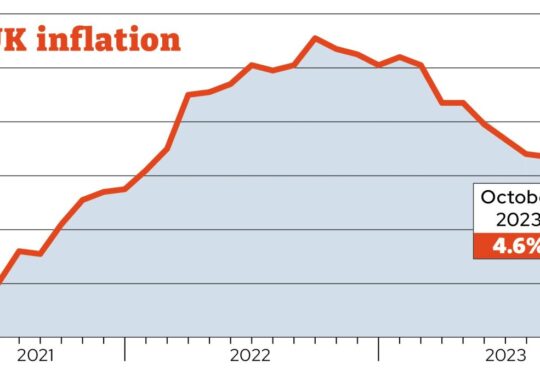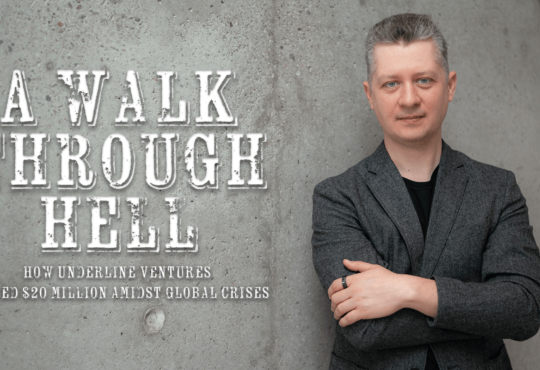
LONDON, April 19 (Reuters Breakingviews) – Britain’s economy is gasping for air, starved of the oxygen of private investment. Politicians and financiers think a consolidation of the country’s pension funds would breathe new life into its stocks, startups and infrastructure. But while bigger pools might be good news for retirees, they wouldn’t necessarily solve the UK’s wider malaise.
The long-term outlook for Britain’s economy is a tale of woe. As with all old-fashioned scary stories, there’s a need for both a villain and a saviour. Some Westminster and City figures think they are one and the same: the country’s 2.2 trillion pound retirement system. Former Prime Minister Tony Blair and ex-Conservative Party leader William Hague believe that pension funds’ steady retreat from domestic assets in the past decades caused the lack of investment that is crimping growth. To reverse that, Michael Tory, founder of boutique investment bank Ondra Partners, argues that Britain’s 33,000-plus private pension funds should be merged into fewer, bigger entities that would be incentivised, or coerced, to buy British.
The economic diagnosis is correct. The Bank of England expects annual GDP growth to average just 1% over the long run, around half the rate in the decade before the pandemic. Lack of private investment is a key reason. In 2021, gross fixed capital formation, a measure of investment, accounted for 17% of UK GDP, compared to 24% in France and 21% in the United States, according to the World Bank. To reach the average level of other G7 nations, Britain would need an extra 115 billion pounds a year of annual investment.
Meanwhile, there is no doubt that UK defined-benefit pension funds, company-sponsored plans that promise a specific payment upon retirement, have moved away from UK equities. In 2000, these funds, which collectively manage around 1.6 trillion pounds, invested around 50% of their assets in Britain’s stock market. In 2022, only 2.5% went into UK equities, according to the Pension Protection Fund. By contrast, bond allocations went from 23% to 72% in the same period.
Blair, Hague and Tory want to redress that by consolidating the 5,130 defined-benefit plans into 100 much larger funds and meshing the 27,000 defined-contribution schemes – plans that are primarily funded by employees – into a small set of “master trusts”. To encourage mergers and boost UK investments, they propose a tax incentive. Only members of funds with over 25 billion pounds under management that invest at least 25% of their assets in the UK will be able to retain the current exemption from capital gains tax on the first 25% of their pensions.
The proposals also entail creating a 100 billion pound pension fund, modelled on the Canada Pension Plan Investment Board, a retirement giant with $536 billion assets under management. The new entity would also have to invest a quarter of its assets at home.
The proposals fall short on several grounds. For a start, defined-contribution schemes do invest in UK equities. The industry’s master trusts – schemes where individuals combine their pensions from different employers – allocate 70% to equities for members who are 20 years away from retirement. Overall, some 19% of these funds’ assets are in UK stocks, according to the Pensions Policy Institute.
Obsessing about defined-benefit schemes’ asset mix, meanwhile, seems odd. Because most companies found their cost and risks too much to bear, they have already switched to defined-contribution plans: only 10% of defined-benefit schemes are open to new members. Last year’s rise in bond yields means defined-benefit scheme assets outweigh liabilities by 160 billion pounds, according to PwC, reducing the imperative for equity’s generally higher returns. But the bigger issue is that these schemes should be selecting assets based on the best risk-adjusted returns for policyholders, not where they are situated.
The dream of a 100 billion pound gorilla modelled on CPPIB is a case in point. The Canadian behemoth is not mandated to invest domestically. As a result, only 16% of its assets are situated at home.
Combining defined-contribution schemes into larger master trusts would certainly give them the heft to make bigger investments, reduce the fees they pay and venture into complicated assets like private equity and hedge funds. That would benefit retirees. But a bigger inflow of investment into blue-chip UK equities would not necessarily help smaller and medium-sized firms or startups.
There are better ways to boost British growth. The first is to allow companies to offset the full value of their investments against corporation tax. The government introduced this measure in the latest budget, but only for three years. The Office for Budget Responsibility, the independent fiscal watchdog, reckons it will boost business investment by 3% over that period. But that’s only a tenth of the investment gap between the UK and France, Germany and the U.S., and the benefits will dissipate once the policy expires. Making the tax exemption permanent could cost around 11 billion pounds a year but would increase business investment by 5% in the long run, according to the Resolution Foundation.
More coherent national planning laws, reducing local authorities’ whims, would also give businesses the certainty needed to invest. And attracting more foreign investments, through tax breaks and subsidies targeted at specific industries, as with the U.S. Inflation Reduction Act, would also help. Overseas investors already own 50% of the FTSE 100 index (.FTSE) but they have shown much less appetite for smaller firms.
If UK assets can yield the risk-adjusted returns offered by other assets, pension funds will join in too. But tagging them as both scapegoats and heroes in Britain’s gory tale of underinvestment is unlikely to lead to a happy ending.
Follow @guerreraf72 on Twitter
Editing by George Hay and Streisand Neto
Disclaimer: The views expressed in this article are those of the author and may not reflect those of Kitco Metals Inc. The author has made every effort to ensure accuracy of information provided; however, neither Kitco Metals Inc. nor the author can guarantee such accuracy. This article is strictly for informational purposes only. It is not a solicitation to make any exchange in commodities, securities or other financial instruments. Kitco Metals Inc. and the author of this article do not accept culpability for losses and/ or damages arising from the use of this publication.






